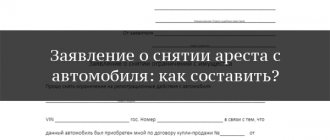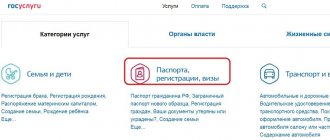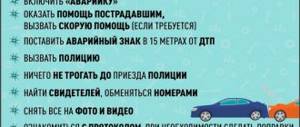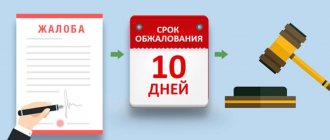Restriction of registration actions: instructions for use.
In recent years, the used car market has literally broken records. Used car sales have increased dramatically over the past few years. But at the same time, the number of vehicles subject to certain registration restrictions has also increased. To our regret, every year more and more car owners and buyers are faced with problems with their registration and re-registration with the State Traffic Inspectorate.
And this is despite the fact that there are a number of official services on the Internet that allow you to check any car not only for theft, but also for the presence of restrictions on registration actions with the traffic police.
But what to do if restrictive measures have already been imposed on the car, and the car owner needs to remove them? How to find out in advance which body has imposed a ban on registering a car with the traffic police? Let's figure it out together, friends.
First, let's determine what restrictions may be imposed on the property of the car owner. In particular, we will find out with you what restrictive measures can be imposed on the vehicle.
First, you and I need to understand on the basis of what legislative act in Russia certain restrictive measures can be imposed on a car.
The main regulatory law in Russia is the Federal Law “On Enforcement Proceedings” dated October 2, 2007 N 229-FZ.
- Thus, according to Law FZ-229 “On Enforcement Proceedings”, the bailiff has the right to seize the debtor’s property within the framework of enforcement proceedings, as an interim measure until the debt is paid or partial repayment of the debt begins.
That is, if enforcement proceedings are initiated against the owner for any debts by the bailiff service within the framework of Federal Law No. 229, then in accordance with Article 80 of this law, any property of citizens may be seized.
General information
Therefore, if a car is seized, you can easily check this, and then find out how to remove the seizure from a car imposed by a bailiff after paying all debts.
It is quite easy to lift an arrest, of course, if the reasons that led to it are eliminated and this is visible in all databases. By the way, if a car is sold with seizure, this can be noticed during the process of deregistration.
It would be useful to check the transport at all bases of the Russian Federation in any case, so as not to purchase a seized car.
When a car owner has an overdue fine, arrears on a loan or alimony, the court most often seizes his property.
Then the owner must contact the bailiffs to find out who seized the car and for what, and also figure out what measures need to be taken to lift the seizure and regain the opportunity to fully dispose of the property.
And if a person has outstanding loans, possible fines or other obligations related to money, then he should check the car and other property in the bailiff database.
After all, if there are relevant records there, then measures should be taken as soon as possible to lift the arrest by contacting the institution whose employees imposed such a restriction on the property.
A car can be seized by several authorities that work in this direction, depending on the claims against its owner, as well as the essence of the case.
| Court | If he is considering a case in which the owner of the car acts as a defendant, and also if the car is a disputed property. There are also cases when the proceedings are of a material nature, and the car is simply confiscated to satisfy the interests of the plaintiff |
| Bailiffs | Employees of the Federal Bailiff Service can impose an arrest when they receive a writ of execution in which the owner of the car has the status of a debtor who is in no hurry to repay debts. If you do not hurry up with the proceedings, the property may be sold at auction |
| Customs services | They can seize only if problems arise during the customs clearance procedure for the car in Russia |
Thus, if the car was legally imported and there are no problems with customs, then the arrest will definitely be the work of the court or bailiffs, and the issue must be resolved with them before they make a decision on the sale.
Normative base
In addition, you should understand what a notice of seizure looks like, what information should be contained in it, and also in what cases they can not only seize a car, but also prohibit its disposal, even placing it in a special parking lot.
Also, some nuances of the seizure of property are disclosed in the Civil Code of the Russian Federation. For example, Article 144 contains provisions applicable in a situation where the seizure was imposed after the car was sold to the new owner.
Some rules regarding documents are also contained in this document, but it is advisable to clarify their validity and rules of use with the authority that seized the property.
What does “vehicle impound” mean?
Many citizens in the country confuse this restriction of registration actions imposed by a bailiff with the seizure of a vehicle. In fact, friends are not the same thing. The arrest itself implies a specific prohibition on the disposal of this property.
Here are the cases in which property seizure is used as part of enforcement proceedings:
— Ensuring the safety of property that is subject to transfer to the claimant or sale.
— Execution of a court decision on confiscation of property.
— Execution of a court decision to seize property that belongs to the debtor and is owned by him or third parties.
The seizure of the debtor's property may consist of the following, namely, both in prohibiting the disposal of property, and (or) in limiting the right to use property or in its seizure.
How to remove restrictions
Having learned about the imposition of a ban on transactions with personal vehicles, first of all, the car owner needs to make sure that the restrictive measures apply specifically to actions involving a change of owner, and find out about the possible reasons. You can check this on the traffic police website by filling out a special form, or you can personally contact the department with a request. You will need to enter the vehicle’s VIN into the online form, after which information about the essence and reasons for the ban imposed, as well as the name of the structure that issued the decision about it, will appear in the window. Having found out which structure issued the ban, you need to contact this body, making an official request for more detailed information. Further actions to lift the ban will depend on the reasons for its imposition.
Most often, government agencies impose a ban on changing the owner of a car due to the formation of a financial debt of its owner. In the event of a debt, the owner of the vehicle will be required to repay it and notify the relevant authority, providing documents confirming payment of the debt. In this case, you can request payment in installments or in a lump sum, as well as through other financial assets. The payment procedure is established between the debtor and the Bailiff Service.
If the debt was accrued as a result of an error, the owner needs to go to court to clarify the circumstances and remove the debtor status. In this case, to lift restrictions on transactions, you will need to wait until the end of the trial and receipt of a court decision to drop the charges. The owner of a vehicle has 10 days to appeal an unlawful ban after the decision is made.
As a rule, the owner of the car receives written notices of the required payment with warnings about the imminent imposition of a ban on transactions. If the owner was not able to obtain information from the authorities, he can apply to the court with a request to cancel the ban and repay the debt within a new specified period. This is possible when the owner of the vehicle did not live at the address where the notices were delivered, was abroad, or the letters were sent to the wrong address. To request a cancellation you will need:
- Apply to the court to cancel the ban and defer payment, providing evidence of your absence at the address where the notices were received.
- Contact the Bailiffs Department with information that a claim has been filed with the court for deferred payment, indicating the reasons.
If the court makes a positive decision, the bailiff service will cancel the ban order after receiving a court ruling in favor of the car owner.
In what cases can a car not be seized?
According to the Federal Law “On Enforcement Proceedings”, in particular Article 80, paragraph 1.1 , seizure of property is not allowed if the amount of debt (collection amount) is less than 3,000 thousand rubles.
That is, if you owe someone less than 3,000 thousand rubles , then even if enforcement proceedings are initiated against you, the bailiff service will not be able to seize your property (including your car) as a measure to ensure payment of the debt.
Who can seize
Different bodies have similar powers. Most often, this measure is used by the court and the FSSP. In this way, they protect the car - since at any moment it may be necessary (or already necessary) to confiscate it with further sale.
Sometimes the arrest is imposed by the traffic police (if the car is involved in an accident case, but fled the scene), investigative authorities (if the car belongs to a suspect in a crime).
As mentioned above, customs can also seize. As well as guardianship authorities - in the interests of minors.
The reasons will be different in each case. In most cases, bailiffs will seize a vehicle for debts if they have a writ of execution in their hands, and the debtor does not receive any financial resources on a voluntary basis.
Before considering the question of how to remove a seizure from a car, you need to familiarize yourself with some of the details of this process and the services that have the right to impose a measure. First of all, we note that arrest is a forced measure, that is, it is not applied everywhere. A seizure is imposed when the owner of the car, who is also the debtor, not only fails to comply with the terms of repayment of the debt, but does not intend to do so. The procedure for imposing a measure is regulated by the law “On Enforcement Proceedings”. The law establishes that arrest can be imposed:
- Courts.
- Bailiffs.
- Customs services in exceptional cases provided for by law.
The procedure itself requires a court decision, in this case the bailiffs are the executors. After the court’s work, the finished decision is sent to the bailiff service, where a writ of execution is formed. It indicates the reasons for the arrest, information about the debtor and the car. If the bailiffs do not know the location of the debtor, then the case is transferred to the customs authorities. They are the ones who make the arrest.
The basis for seizure is always a court decision recognizing a specific person as a debtor. Debt can be very diverse, which means the reasons for seizure are:
- Loan debts. This is the most common reason for seizure - non-payment of loan obligations. In this case, the bank files a claim in court, in which the debtor is the defendant. The statement from the bank is the reason for the seizure.
- Alimony obligations. This is the second most common reason for arrest. After the divorce, one of the parents must pay alimony for the maintenance of one or more of their minor children. If the former spouses cannot agree voluntarily, one of the parents in whose care the children remain files a claim. In this case, the basis for the seizure is a court order.
- Debts to the state. If a person has debts on utility bills or the customs procedure for registering property has been violated, the car may be seized. The procedure is still the same - a court order is issued and an arrest is imposed.
Prohibition on registration of a car.
By the way, it is worth immediately noting that bailiffs rarely resort to seizing vehicles at the initial stage, preferring to first impose restrictive registration measures on vehicles.
Thus, this is also done within the framework of Article 80 of Federal Law No. 229, namely, paragraph 4 of this law, which provides for restrictions on the right to use property .
What does this mean for the car owner? Everything is very simple. The bailiff has the right, after initiating enforcement proceedings, to limit registration actions with the debtor's car by informing the traffic police authorities, which, in accordance with Order of the Ministry of Internal Affairs of the Russian Federation No. 1001 of November 24, 2008 (as amended in the current version) have the right to limit registration actions with the car by court decision , by decision of the bailiff service, investigative departments, Investigative Committee, Prosecutor's Office or Ministry of Internal Affairs, and other government agencies. structures.
Here's how you can check whether there are restrictions on registration actions with a car at the traffic police
But what if you are planning to buy a used car, but are afraid that registration restrictions are imposed on it? Indeed, if there are restrictive measures in relation to such a car, the new owner, after signing the purchase and sale agreement, simply will not be able to re-register the vehicle in his name within the period established by law...
To our deep regret, there have been many such cases in recent years. Especially after the traffic police authorities simplified the procedure for re-registration of cars after concluding a purchase and sale agreement and other agreements in accordance with the Civil Code of the Russian Federation.
After all, now the owner of a car can sell it without first deregistering it with the State Traffic Inspectorate. Simply, after signing such an agreement, the new owner is obliged to re-register the car in his name within 10 days. As a result, it turns out that the parties to such a purchase and sale transaction must make settlements among themselves under the agreement before registration with the traffic police.
In order for future buyers to know in advance what kind of car they are purchasing, the traffic police authorities have introduced an online service on the Internet to check the car for search, for the presence of restrictions on registration actions with the vehicle.
Also, anyone can check the desired car by personally contacting the traffic police.
Seizure procedure
The procedure is described in detail in paragraph 5 of Art. 80 of the above law.
- An act of seizure is drawn up with an inventory of property, which includes the full names of the persons participating in the procedure, the names of the seized property, and a preliminary estimate of its value.
- The type, duration and scope of the imposed restriction are established, and a note is made in the act.
- If property is seized, this is also indicated in the document.
- A copy of the inventory is transferred to the plaintiff and the recoverer.
- The regulation on the seizure of property is sent to the registration authorities (for vehicles this is the traffic police).
From this moment on, the debtor has no right to dispose of the car. But in some cases, he is given the right to use it - detailed explanations in each specific case must be given by the responsible bailiff.
Why can they impose restrictions on registration actions with the traffic police with a car?
According to the current legislation, the bailiff service can impose restrictions on registration actions with a car by decision of various government bodies, namely regarding debts, legal disputes between owners, etc. contradictions.
Here are the reasons why registration restrictions may be imposed on a car:
- — Debts from traffic police fines.
- — Debts for any administrative fines.
- — Tax debts.
- - Rent debts.
- — Debts for alimony.
- — Litigation regarding ownership or division of property (disputes between individual entrepreneurs, legal entities, heirs, relatives, etc.)
- — For insurance cases related to regressive claims.
- — At the request of the Customs authorities.
- — At the request of the judicial authorities in the interests of organizations that have the car as collateral. For example, under loan agreements.
How to avoid trouble
This can be used if the plaintiff is the owner of the car, and the seizure was imposed on another person.
The claim will be considered for about 2 months, but all documents must be in order, otherwise the claim will be rejected.
But this will only work if there was no subpoena or the recipient did not sign for it. In this case, the decision may be canceled and a new consideration scheduled, and the owner of the car may well pay all the debts that have arisen at this time.
You should also figure out how to remove a seizure from a car that was imposed by a bailiff by mistake, because this can happen, but can be resolved in a short time.
| Non-payment of taxes for any reason | — |
| Debt on alimony | — |
| Consideration of a civil case | According to which the owner of the car can change, that is, it can be divided by heirs or even sold |
| During criminal proceedings | The penalty may be confiscation |
You need to figure out how to remove the seizure from a car that was imposed by the bailiffs. To do this, you need to solve the problem that led to such a measure of restriction, and subsequently submit a written statement.











